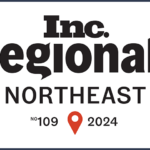Learn What You Can Do to Help Pay Your Employees During the Coronavirus Pandemic.
On April 21, 2020, the Senate approved a second $480 billion stimulus package to help small businesses, which includes $320 billion for the Payroll Protection Program (PPP). This package sets aside $60 billion for underfunded businesses or businesses in rural and minority communities that had difficulty accessing the first round of funding.
There will also be $10 billion for grants under the Emergency Economic Injury Disaster Loan (EIDL) program, $50 billion for disaster recovery loans. We offer these tips to help you keep paying your employees even paid during the coronavirus shutdown.
- Contact Your Lender at Your Bank Today About the Paycheck Protection Program Loan
The applicants who already applied for the PPP Loan will be the first approved applicants for the second round. Then, new applications may be accepted. Therefore, every second you waste not filing your application is another lost opportunity for approval. Based on this information and the previous timeline, the second round of loans may be depleted in 12 calendar days or less.
We recommend that you speak with your commercial lender at your bank today to get your application started. You need to get your application in the queue as soon as possible. Get to know your commercial lender.
Create an open line of communication so you can check the progress of your application daily. Doing so is the only way to have a shot at receiving funding under the PPP. Once this fund is depleted, there is no guarantee the government will release more funding for businesses.
- Monitor the SBA Website Daily for the Emergency Economic Injury Disaster Loan (EIDL)
The SBA will continue to process already submitted applications on a first-come, first-served basis.
As of April 21, 2020, the SBA website still says that it is unable to accept new applications for the Economic Injury Disaster Loan (EIDL)-COVID-19 related assistance program (including EIDL Advances) based on available appropriations funding.
The second stimulus package does not mention if the SBA will be accepting new applications. However, it includes an additional $10 billion for grants under the EIDL program and $50 billion for disaster recovery loans. Therefore, we recommend that you check the SBA website daily to see if they open up the program for new applications.
- Take Advantage of the Employee Retention Tax Credit Under the CARES Act.
The Employee Retention Tax Credit is available to employers who do not receive money under the PPP loan or the Economic Injury Disaster Loan (EIDL). The tax credit is a payroll tax credit of 50% of the first $10,000 of employee expenses, including the employer-paid portion of healthcare.
The tax credit is a payroll tax credit. The Treasury Department is working on a process in which employers can receive an advanced payment of this credit.
To be eligible, you must meet the following requirements:
- Your gross receipts must be 50% less than the same quarter in 2019
- For employers with 100 or more employees, you can only include your full-time employees being paid but not providing services.
- For employers with 100 or fewer full-time employees, you can include all employees, whether they are providing services or not.
.
- Take Advantage of the Family First Coronavirus Response Act (FFCRA)
You may have options beyond keeping your employees on the clock, even from home. Under the FFCRA, employees who have children that are not in school or daycare due to Coronavirus concerns the opportunity to take paid family and medical leave.
The employees will receive 80% of their pay. As the employer, you can receive this money back from the federal government in the form of a refundable tax credit. Refundable means that even if your tax credits exceed the amount needed to pay federal taxes, you will receive the excess money as a refund at the end of the year.
This option works best for employers who have enough money in the bank to pay 80% of payroll for those employees that qualify, even if you do not have 100% of the payroll funds available.
The employees can be full or part-time to qualify. Furthermore, they only have to work for your company for 30 days or more before qualifying for the leave. And, unlike the Family and Medical Leave Act, you need to maintain less than 500 employees, as opposed to 50 or more employees to qualify for the coverage.
- Partial Employee Furloughs
No one wants to lay off employees. However, there is a way to keep employees working with some income and instituting a furlough as well. Most states have established partial unemployment as a result of the Coronavirus outbreak.
Employees may work part-time and still receive unemployment benefits. Therefore, you are allowed to cut employees’ hours to allow part-time work. These employees can bring home a partial paycheck and keep their health insurance benefits.
At the same time, the employee can apply for unemployment benefits, receive the state’s approved unemployment payments, and get the additional $600 a week from the federal government.
This arrangement allows you to keep employees working, keep production moving, and save payroll money. It may not be the best-case scenario for employers or employees, but it is not the worst-case scenario.
Contact WorkplaceHCM Today for Help Navigating Your COVID-19 Options.
We are happy to help you navigate your options and even work with you to find trusted advisors to help implement whatever options you choose to keep business running and employees working.
Contact us or Call us today at (856) 334-9711. We are here to help.




